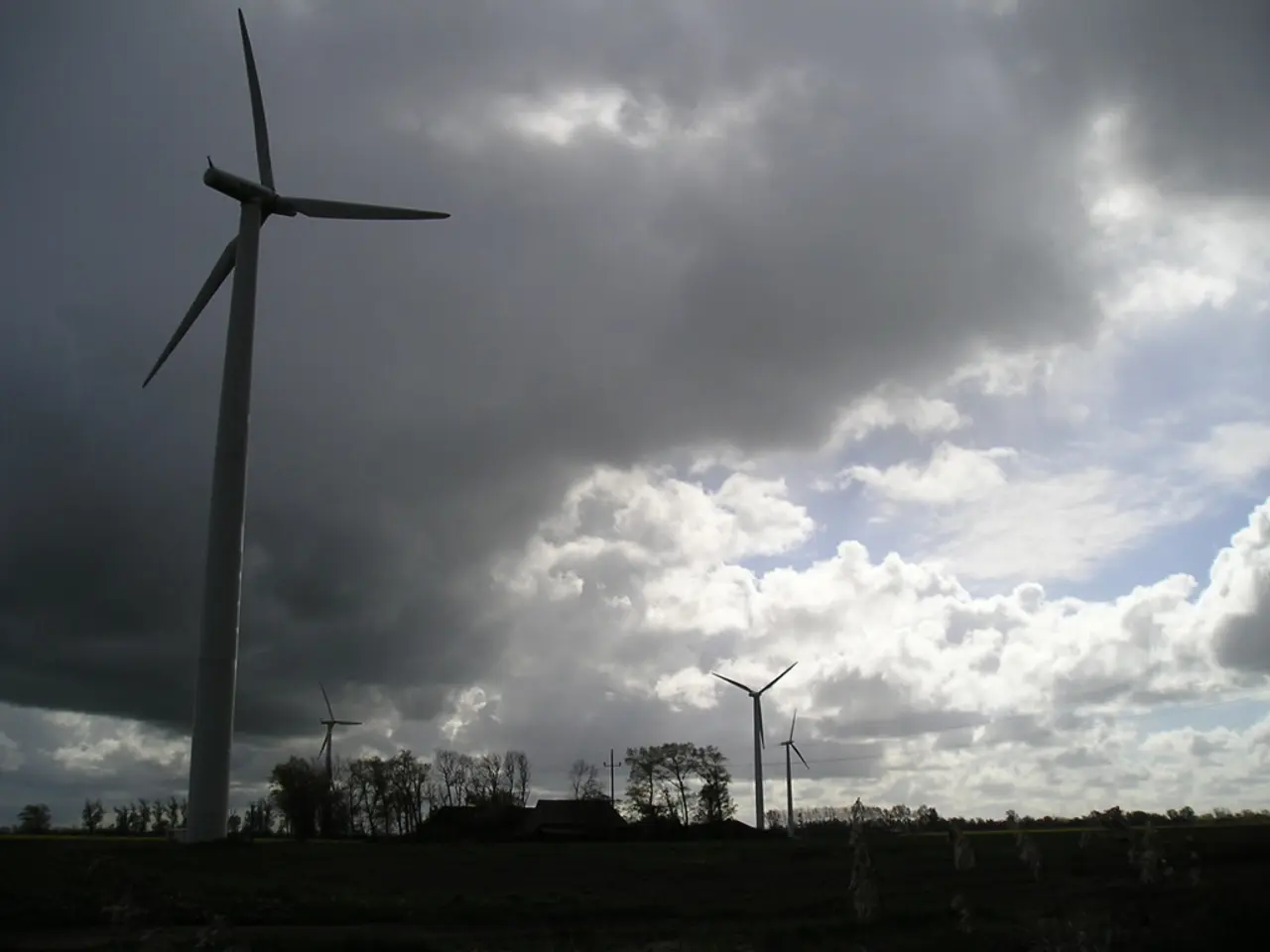Federal authorities closely monitor the economic repercussions of Trump's tariff policies.
Loosen Up: Fed Chair Jerome Powell Keeps an Eye on Trump's Moves
In a press conference today, Federal Reserve Chair Jerome Powell talked about the potential impact of President Donald Trump's policies, such as tariffs and immigration policies, on interest rates.
"We're just starting to see what happens with tariffs, immigration, and other policies, and we need to let those play out before we can make a meaningful evaluation of their effects," he said.
Coming off the heels of a two-day meeting, the Federal Open Market Committee of the Fed broke the cycle of cuts initiated in September 2024. They decided to keep rates within the current range of 4.25 to 4.5%.
Powell emphasized that the Fed would always be attentive to the beginning of every new Administration, doing what they do best: studying data, understanding how it will affect the outlook and risk balance, and using their tools to make assessments that help achieve their goals.
President Trump has threatened to impose 25% tariffs on Mexico and Canada, starting from February 1, as a response to the flow of fentanyl and illegal migration at the border. However, nominee for U.S. Secretary of Commerce, Howard Lutnick, assured that the first set of tariffs would not be implemented if those countries take measures against drug trafficking. He added that there's another batch of tariffs that would be decided at the end of March or in April.
While Powell didn't directly comment on potential tariff and immigration policy implications, the economic impacts can provide some clues. New tariffs could lead to higher inflation, forcing the Fed to tighten monetary policy. Conversely, tariffs could reduce GDP, decreasing the need for rate hikes.
Bracing for policy uncertainty, the Fed will strike a delicate balance between inflation risks and growth risks. The Penn Wharton Budget Model warns that while tariffs may bring in substantial revenue, they could potentially create stagflationary conditions, complicating rate decisions.
Toss in Some Enrichment:
- Trump's tariffs could generate a substantial amount of revenue, but they might also slow job growth and reduce tax receipts, according to the New York City projections.
- Restrictive immigration policies could exacerbate labor shortages, pushing up wage growth, inflation and, subsequently, interest rates. On the flip side, reduced labor supply caused by immigration restrictions could limit economic expansion and, in turn, rate hikes.
Trade disruptions and reduced consumer demand could counteract the inflationary pressures, giving the Fed reason to hesitate on raising rates.
Smart Stuff to Know:
- Trump's tariffs are projected to reduce GDP by anywhere from 0.8 to 8%, depending on assumptions.
- Tariffs' harm to GDP and wages could outweigh revenue benefits, creating a perfect storm of inflation and stagnation that complicates rate decisions.
Extra Bits:
- Kremlin considers Macron's statements on a ceasefire in Ukraine to be warlike
- U.S. asks Russia and Ukraine to accept peace proposal at the UN while both sides accuse each other
- EU tells Putin he can stop his war in Ukraine today without waiting for May 8
- Iran claims it has repelled a sophisticated cyberattack against its infrastructure.
Fun Fact:
In a digital world, nothing is completely safe. Yet, Switzerland, despite suffering an outage, managed to stay offline without causing any significant disruptions in Europe.
Ramble On:
In a politically charged climate, understanding the economic implications of policy decisions can be tricky. With a new Administration in power, we await more tit-for-tat fights, shifting tariffs, and restrictive immigration policies. Yet, the almighty powers at the Fed will remain level-headed, ever-vigilant, diligently sifting through the data and using their tools… all to keep us from having to deal with yet another economic crisis. Can't say I'm complaining, though. It's nice to have someone else take the heat, isn't it?
- Federal Reserve Chair Jerome Powell, following a two-day meeting, stated that the Fed needs to observe the effects of President Donald Trump's policies such as tariffs and immigration before making a meaningful evaluation.
- Powell emphasized that the Fed will always be attentive to the effects of new Administrations on the economy, using their tools to make assessments that help achieve their goals.
- The economic implications of Trump's proposed 25% tariffs on Mexico and Canada could lead to higher inflation, potentially forcing the Fed to tighten monetary policy.
- Economic slowdown due to tariffs could decrease the need for rate hikes, creating a delicate balance for the Fed between inflation risks and growth risks.
- Despite potential revenue, Trump's tariffs could slow job growth, reduce tax receipts, reduce GDP, and create stagflationary conditions, complicating rate decisions.





